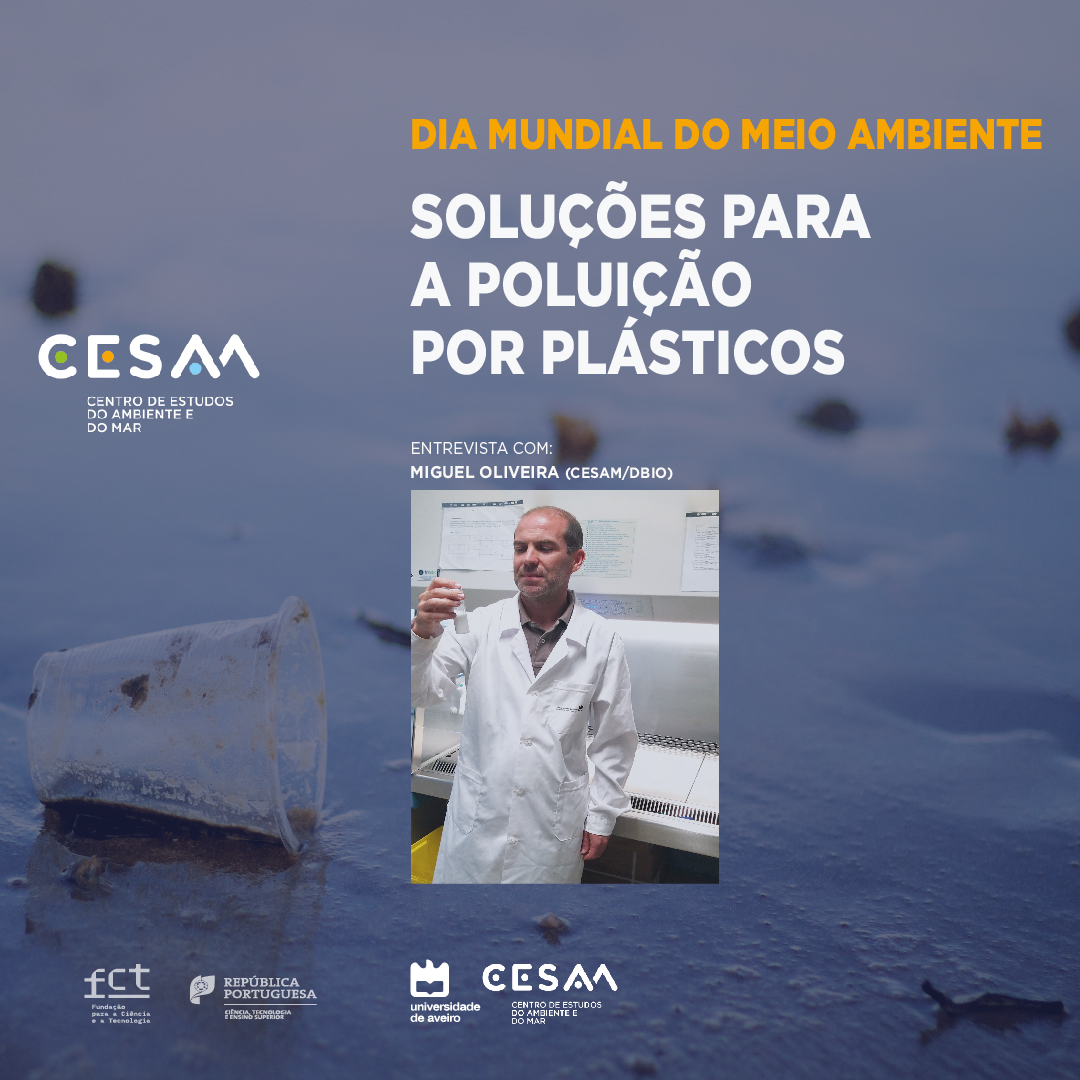World Environment Day is celebrated on June 5th. The year 2023 marks the 50th anniversary of the United Nations Environment Programme (UNEP), the organization responsible for the annual celebration of World Environment Day. Over the years, the observance of this day has brought together organizations from civil society, academia, industry, and political power, becoming one of the largest global platforms for environmental awareness.
In 2023, the focus of this day is on the theme of plastic pollution, under the slogan “Combat Plastic Pollution.” The United Nations Environment Programme, on its website, states that “the rapid growth in plastic pollution levels poses a serious global threat, negatively impacting the environmental, social, and economic dimensions of sustainable development. If the current trend continues, the amount of plastic waste entering aquatic ecosystems could almost triple by 2040.”
As part of the celebration of this day, we spoke with Miguel Oliveira (CESAM/DBIO), whose work is related to the theme of plastic pollution.
CESAM Communication: “If you had to highlight just one, what would be the risk of plastic pollution that you would emphasize?”
Miguel Oliveira: I would say that the main risk lies in the long-term effects and the issue of additives. Plastics have different constituents, but it’s these chemical substances, the additives, that allow them to have their characteristic color, plasticity, or thermal resistance, for example.
What often happens is that, with the aging of plastics under certain conditions, these chemical products start to be released. It’s known that these chemicals are hazardous to aquatic organisms and humans. A well-known example is bisphenol A, which has been removed from products for children. In the environment, one of the main risks is the ability of particles to adsorb contaminants. Microplastics can adsorb contaminants on their surface or inside them, such as pharmaceuticals, and when ingested by organisms, they can release these active substances, resembling a “Trojan horse” effect.
But it’s important to clarify that presence doesn’t necessarily indicate effect. We need to take precautions, for sure, and we have already detected some effects of plastics on organisms in our studies – such as immune system alterations and changes in reproduction – but only at very high concentrations. More studies are needed, and it’s crucial to understand the long-term effects of the presence and ingestion of these plastics by organisms.
CESAM Communication: “What are the main issues [related to plastics] that your current research aims to address?”
Miguel Oliveira: We have different lines of research in our laboratory, but in one of these lines, we are testing alternative polymers – biopolymers. The idea is that biopolymers are safer (…) replacing petroleum-derived polymers like polyethylene with others of natural origin that are synthesized from algae or bacteria. We’re testing possible new polymers in collaboration with other research groups, aiming for polymers that pose less danger to aquatic organisms and humans and degrade more easily. This is with the goal of making changes to reduce the release of these substances into the environment.
Besides research, another area we focus on is science communication. We’re also conducting studies in collaboration with experts in social psychology to analyze public perceptions of plastics – whether they consider them harmless, if they see differences between types of plastics, and so on. This will help us develop tools for more effective communication with the public.
CESAM Communication: What kind of action or behavior would you recommend to an ordinary citizen to help in this ‘fight’ against plastic pollution?
Miguel Oliveira: I would suggest conscious use of plastics and plastic reuse. Because if we all consider the fate and end of life of plastics, that will help a lot. We can’t ignore that plastics are very useful and can be beneficial. For example, in biomedicine, plastic materials are much cheaper, effective, and easily sterilizable.
The point is to limit the use of single-use plastics. How can consumers do that? For instance, choose products that require less plastic – use cloth bags instead of plastic, buy cosmetics without these types of polymers, or buy products in bulk. These are small actions but can help limit the presence of these substances in the environment.
